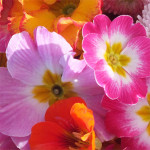| Bee Conservation: 1% of Maddocks Farm Organics’ profits go towards bee, butterfly and insect conservation.
IN THE PAST 25 YEARS WE HAVE LOST 75% OF ALL FLYING INSECTS. 75%!!! THIS IS A STAGGERING AMOUNT.
The plight of the UK honey bee has been regularly in the press for several years now. The relationship between man and bee has become increasingly fragile and bee numbers are rapidly dropping. There have been many explanations given for this and it is a complication subject but there is strong evidence that neonicotinoids – a class of pesticide first used in agriculture in the mid 1990s at exactly the time when mass bee disappearances started occurring – are involved in the deaths.
The Soil Association explains more:
“The evidence against these chemicals is strong enough that they have been banned or suspended in France, Germany and Italy – but not yet in the UK. In April 2013 the EU decided to suspend three types of neonicotinoid pesticides – clothianidin, imidacloprid and thiametoxam. The suspension will be implemented for two years from December 2013.
How neonicotinoids work – Neonicotinoids work as an insecticide by blocking specific neural pathways in insects’ central nervous systems. The chemicals impair bees’ communication, homing and foraging ability, flight activity, ability to discriminate by smell, learning, and immune systems – all of which have an impact on bees’ ability to survive.
It seems bees’ genetic make up makes them particularly vulnerable to neonicotinoids. Recent mapping of the bee genome has revealed that bees’ capacity to detoxify chemicals is much lower than other insects. Instead bees have two strategies to protect themselves. On the first day of foraging in a new area, scout bees are sent out first to taste the nectar and pollens – if any are adversely affected they will be expelled from the hive immediately, and the colony will avoid the area.
In addition, once foraging begins, nurse bees in the hive clean foragers each time they return. These strategies protect the colony from mass exposure to lethal doses of chemicals, but they do leave honey bees particularly susceptible to the sub-lethal exposure to any contaminants they encounter.
The other really important factor is the complex behaviour of honeybee colonies. For example, the 10,000 forager bees in a typical hive need to co-ordinate their quest for nectar – and they do this through the famed ‘waggle dance’, which communicates the flight direction and distance of sources of nectar. The complexity and precision of these dances is breathtaking, and success relies on the integrity of a nervous system where each synapse is crucial. It is no surprise then that honey bees have been shown to have a higher number of neurological receptors than other insects.
Honey bees live and work as a colony, not as individuals; what seems to be happening is that the cumulative impact of small doses of nenoicotinoids on thousands of bees over time is affecting individual bee’s ability to work and communicate effectively as part of a colony. Because lots of bees in each colony are behaving sub-optimally this can lead to the sudden, and devastating, outcomes that we’ve been witnessing in recent years.
The Soil Association believes that there is already enough evidence to justify an immediate ban on neonicotinoids today”. (Source – The Soil Association).
Without bees it would cost UK farmers £1.8 billion a year to pollinate our crops. This is more than it costs farmers to produce all the milk consumed in the UK every year. Bees are essential to our gardens, parks and countryside because they pollinate over 75% of our plants which in turn are vital to our insects, birds and animals. (source – Friends of the Earth). Since the 1970s ALL tomatoes in the world have been pollinated by bumblebees.
At Maddocks Farm Organics we are donating 1% of our profits to bee and butterfly and insect conservation. We have both domesticated and wild honey bees here on the farm as well as numerous varieties of bumblebees.
In 2017 we hosted a bee course and bumblebee identification day to try and identify all the different bees that visit the farm (so please do contact Jan if you are interested in attending in 2018) we spotted more than 9 varieties of bumblebee and raised more than £400 towards Bumblebee Conservation – more was raised in 2018.
We are Corporate Supporters of the Bumblebee Conservation Trust. Pollinators are crucial to the success of our business and we plant not just edible flowers but also wild flowers and species that we know will help support the bees when they most need it. We are Corporate Supporters of Butterfly Conservation Org.
We can all do our bit to help honey bees, bumblebees and other pollinators. By planting lots of different flowers plants that are attractive to insects you can increase and encourage wild life into your garden. Flowers with short corollas, such as borage, are very attractive to shorter tongued pollinations and honeybees in particular, whilst lavender, which has longer corollas, is much more popular with a range of longer tongued pollinators, particularly bumblebees. Single varieties of flowers are also preferable to doubles.
|

 PAGE Q.R. CODE
PAGE Q.R. CODE
 PAGE Q.R. CODE
PAGE Q.R. CODE